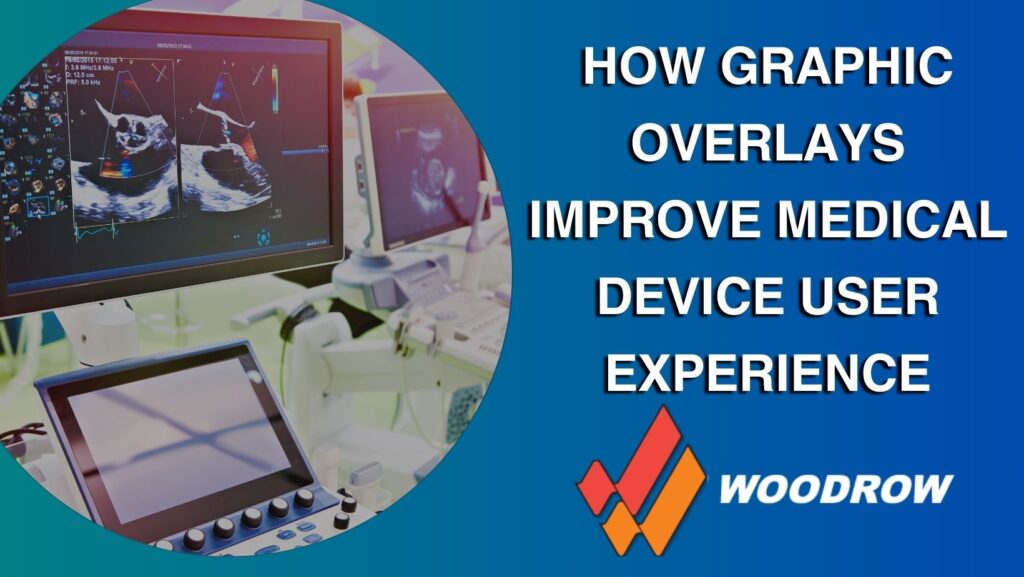
Introduction to Graphic Overlays in Medical Devices
The interface between the technology and the user is crucial in the intricate world of medical devices. Here, graphic overlays play a pivotal role. These are not merely aesthetic additions but fundamental in making sophisticated medical devices accessible and user-friendly. By offering clear and intuitive guidance, graphic overlays allow healthcare professionals to concentrate on their primary duty – patient care.
What Are Graphic Overlays?
Graphic overlays are the visible elements on medical device surfaces. They’re typically the first point of interaction, displaying essential information and navigating the user through various functions. The design integrates functionality and data, employing color coding, symbols, and text for easy operation.
Significance in Healthcare
Graphic overlays are invaluable in a sector where precision and reliability are paramount. They minimize errors, accelerate device operation, and elevate the user experience – crucial in high-stress environments like hospitals where efficient, error-free equipment use can be life-saving.
Enhancing User Interface
Graphic overlays do more than labels; they’re integral to the user interface. Their design profoundly affects how users interact with the device, impacting efficiency and accuracy.
User insights are vital for overlay design, ensuring they meet end-user needs. Additionally, overlays must adhere to regulatory standards, certifying their safety and performance. User-friendly graphic overlays are essential for positive electronic device interactions.
Effective design involves understanding user needs, selecting durable materials, optimizing visual appeal and interaction, incorporating feedback mechanisms, considering ergonomics, ensuring compliance, and collaborating with professional manufacturers. Crafting quality overlays enhances user satisfaction and competitiveness in the market.
Designing Graphic Overlays: A Delicate Process
Creating graphic overlays for medical devices involves a delicate balance between aesthetic appeal and functional clarity. Here are key considerations:
- Material Selection: Materials must be durable and clear, often employing polycarbonates or polyester for their robustness.
- Durability and Legibility: Overlays must resist wear and remain legible, ensuring consistent usability.
- Aesthetic Appeal: While functionality is crucial, the aesthetic aspect is vital, making devices approachable and less intimidating.
Technological Advancements
Graphic overlay technology is evolving, enhancing functionality and design. Touch-sensitive technologies and integration with digital displays are notable innovations, leading to more intuitive and engaging interfaces.
Customization and User Safety
Tailoring graphic overlays to specific devices is essential, considering their intended use and user demographics. This customization is crucial for user safety, reducing operational errors, and ensuring compliance with medical standards.
Impact on Training and Efficiency
Well-designed graphic overlays simplify the learning curve for medical devices, improving efficiency in medical settings. They reduce training costs and contribute to device longevity and maintenance.
Sustainability in Manufacturing
The move towards sustainability in manufacturing involves eco-friendly materials and processes, reducing the environmental impact. According to the EPA: Growing numbers of manufacturers embrace sustainable practices, minimizing environmental impact while conserving resources. This approach, termed sustainable manufacturing, enhances financial and ecological benefits, alongside safety. Companies recognize sustainability’s importance for growth, competitiveness, operational efficiency, brand reputation, and long-term viability. Embracing sustainability involves integrating it formally, innovating, and collaborating with stakeholders for lasting success.
The Future of Graphic Overlays
Emerging trends suggest a promising future for graphic overlays in medical devices, with potential growth in areas like accessibility, inclusivity, and integration with advanced technologies.
Conclusion
Graphic overlays are transformative in medical device design, significantly impacting user experience, safety, and operational efficiency. Their evolution will continue to shape the future of healthcare technology.
